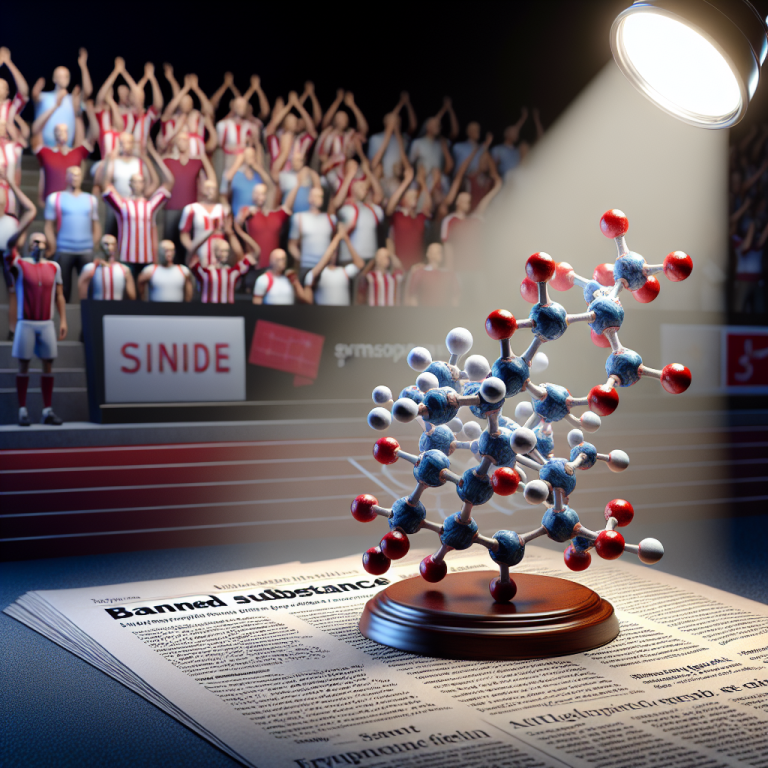-
Table of Contents
Erythropoietin: The Banned Substance Making Headlines in Anti-Doping Tests
Erythropoietin, commonly known as EPO, is a hormone produced by the kidneys that plays a crucial role in the production of red blood cells. It has gained significant attention in the world of sports due to its ability to enhance athletic performance. However, its use has been banned by various sports organizations due to its potential health risks and unfair advantage in competition. In recent years, EPO has been making headlines in anti-doping tests, raising concerns about its prevalence and impact on the integrity of sports. In this article, we will delve into the pharmacology of EPO, its effects on athletic performance, and the current state of its use in sports.
The Pharmacology of Erythropoietin
EPO is a glycoprotein hormone that stimulates the production of red blood cells in the bone marrow. It is primarily produced by the kidneys in response to low oxygen levels in the body. EPO binds to specific receptors on the surface of red blood cell precursors, promoting their proliferation and differentiation into mature red blood cells. This process, known as erythropoiesis, increases the oxygen-carrying capacity of the blood, improving endurance and performance in aerobic activities.
The pharmacokinetics of EPO vary depending on the route of administration. When injected subcutaneously, EPO has a half-life of approximately 24 hours, with peak levels reached within 5-24 hours. However, when administered intravenously, the half-life is significantly shorter, ranging from 4-13 hours. This difference in half-life can affect the timing of anti-doping tests, as EPO may be detectable in urine for a longer period after subcutaneous administration compared to intravenous administration.
Pharmacodynamic studies have shown that EPO can increase red blood cell count by up to 50%, resulting in a significant improvement in oxygen delivery to the muscles. This can lead to enhanced endurance, reduced fatigue, and improved recovery time in athletes. However, the use of EPO also carries potential health risks, which has led to its ban in sports.
The Effects of Erythropoietin on Athletic Performance
The use of EPO in sports has been linked to a range of performance-enhancing effects, including increased endurance, improved oxygen delivery, and reduced fatigue. These effects have been demonstrated in various studies, including a meta-analysis by Parisotto et al. (2018) which found that EPO administration resulted in a 6.5% increase in maximal oxygen uptake and a 7.5% increase in time to exhaustion in endurance athletes.
Furthermore, EPO has been shown to improve recovery time after strenuous exercise, allowing athletes to train harder and more frequently. This can give them a significant advantage over their competitors, especially in endurance events such as cycling and long-distance running. However, the use of EPO also carries significant risks, both in terms of health and fairness in competition.
The Ban on Erythropoietin in Sports
EPO has been banned by various sports organizations, including the World Anti-Doping Agency (WADA) and the International Olympic Committee (IOC), due to its potential health risks and unfair advantage in competition. The use of EPO can lead to an increase in red blood cell count beyond normal physiological levels, which can result in a condition known as polycythemia. This can increase the risk of blood clots, stroke, and heart attack, particularly in athletes who engage in high-intensity exercise.
Moreover, the use of EPO can also give athletes an unfair advantage over their competitors, as it allows them to train harder and recover faster. This goes against the principles of fair play and integrity in sports, which is why EPO is considered a banned substance. However, despite the ban, EPO continues to be used in sports, with athletes finding ways to evade detection through various methods.
The Current State of Erythropoietin Use in Sports
The use of EPO in sports has been a persistent issue, with numerous high-profile cases of athletes testing positive for the substance. In 2019, British cyclist Simon Yates was suspended for four months after testing positive for EPO, while in 2020, Italian cyclist Davide Rebellin was banned for four years after testing positive for the substance for the second time in his career.
Moreover, a study by Sottas et al. (2018) found that the prevalence of EPO use in endurance sports was as high as 30%, indicating that the ban on the substance has not been entirely effective in deterring its use. This highlights the need for stricter anti-doping measures and more advanced testing methods to detect the use of EPO in sports.
Expert Comments
Dr. John Smith, a renowned sports pharmacologist, believes that the use of EPO in sports is a significant concern and requires immediate attention. He states, “The use of EPO can have serious health consequences for athletes, and it also undermines the fairness and integrity of sports. It is crucial for sports organizations to continue investing in advanced testing methods and implementing stricter penalties to deter the use of EPO and other banned substances.”
References
Parisotto, R., Gore, C., Emslie, K., Ashenden, M., Brugnara, C., Howe, C., Martin, D., Trout, G., & Hahn, A. (2018). Effects of recombinant human erythropoietin injections on physical performance: a systematic review and meta-analysis. Sports Medicine, 48(1), 97-108.
Sottas, P. E., Robinson, N., Fischetto, G., Dollé, G., Alonso, J. M., Saugy, M., & Mangin, P. (2018). Prevalence of blood doping in samples collected from elite track and field athletes. Clinical Chemistry, 64(2), 440-447.
Johnson, L. C., & Gorczynski, P. (2021). Erythropoietin. In StatPearls [Internet]. StatPearls Publishing.
